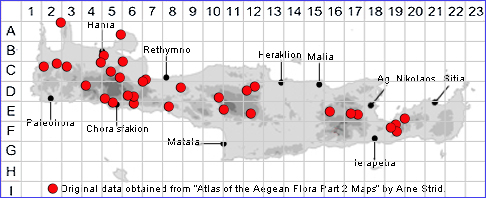SPECIES DESCRIPTION
TRIFOLIUM GRANDIFLORUM
Family and Genus:- See- LEGUMINOSAE/Subgen. LOTOIDES/Sect.
Common Names:- None
Homotypic Synonyms:- Chrysaspis grandiflora.
Meaning:- Trifolium (L) With three leaflets.
Grandiflorum (L) With large flowers.
General description:- Annual.
Stems.
1) 10-30 cm tall, stern single or sparingly branched from the base, ascending to
erect, appressed-pubescent.
Leaves:-
1) Leaflets, 10-18(-24) mm, oblong-elliptical, subglabrous, serrulate the terminal
petiolulate.
2) Stipules, semi-ovate or oblong.
Flowers:-
1) Heads, up to 30 mm in fruit, ovoid, lax,
2) Peduncles, 8-20-flowered, 2-3 times as long as the leaves,
3) Pedicels, c. 1 mm, about as long as the upper limb of the calyx-tube.
4) Bracts, represented by a few short, red, evanescent glandular hairs.
5) Calyx-teeth;
a) upper, equalling or shorter than the upper limb of the calyx-tube.
b) 2-3 times longer than the upper.
6) Corolla, 8-11 mm, dull tawny purple, persistent and tuming brownish. Fruiting
head ovoid.15-22 mm wide, rather lax.
Fruit:-
1) Legume, 1(-2)-seeded.
Key features:-
1) Calyx-teeth, unequal, the 2 upper shorter than the rest.
2) Corolla, 8-11 mm,dull tawny purple, persistent and tuming brownish.
3) Flowers, ± spicate.
4) Bracts, represented by a few short, red, evanescent glandular hairs.
5) Legume, 1(-2)-seeded.
6) Fruiting heads ovoid, lax, with peduncles exceeding the leaves.
Habitat:- Meadows, mixed scrub, open deciduous woodland, grassy places,
generally in the hills. 0-1600 m.
Distribution:- Throughout Greece, C & E Mediterranean region and through
Anatolia to W & N Iran. Fairly widespread but not common on Crete.
Flowering time:- Apr-June.
Photos by:- Steve Lenton

